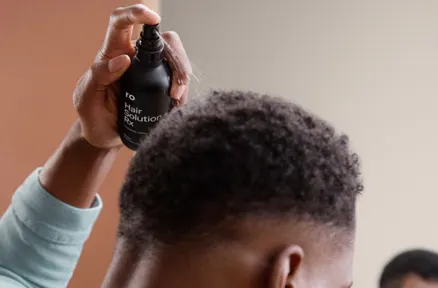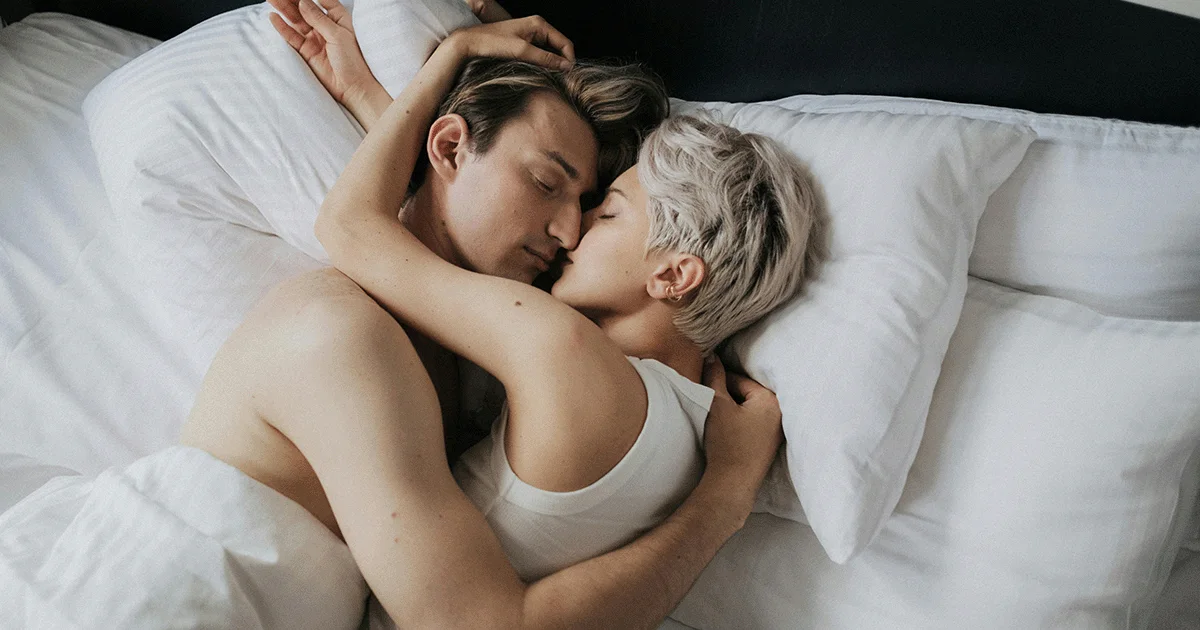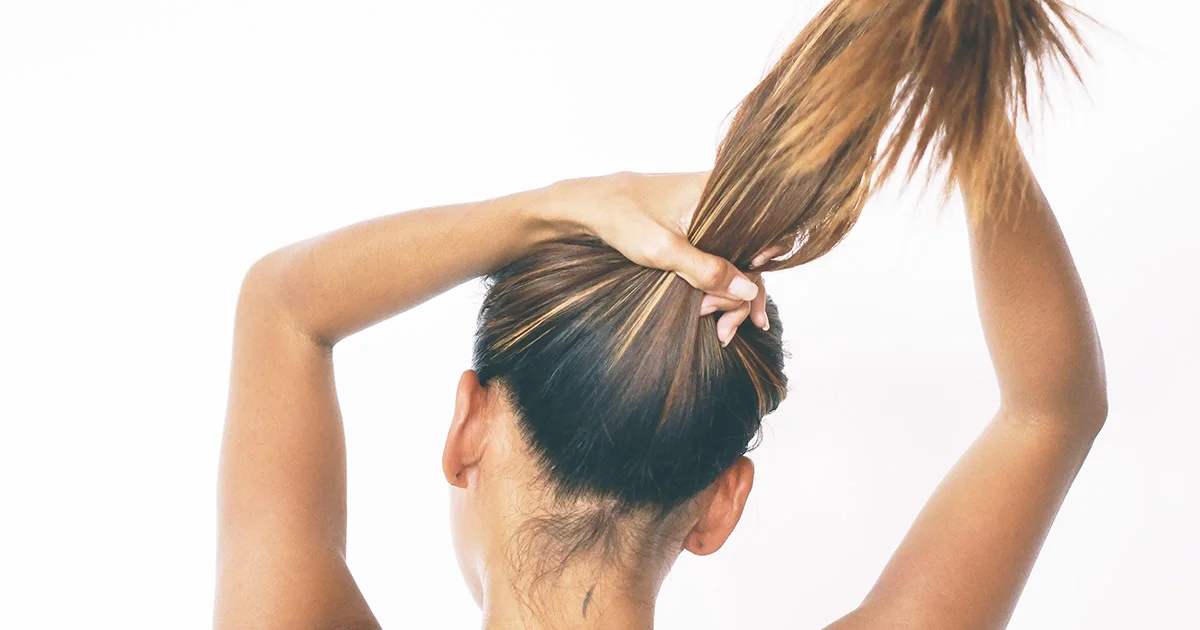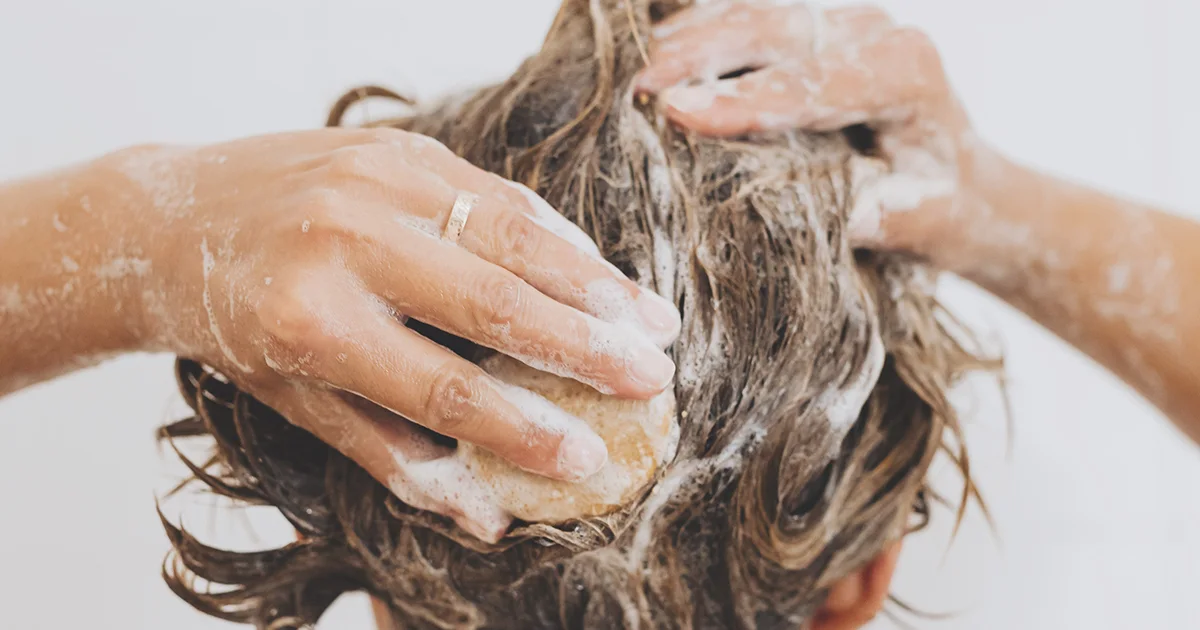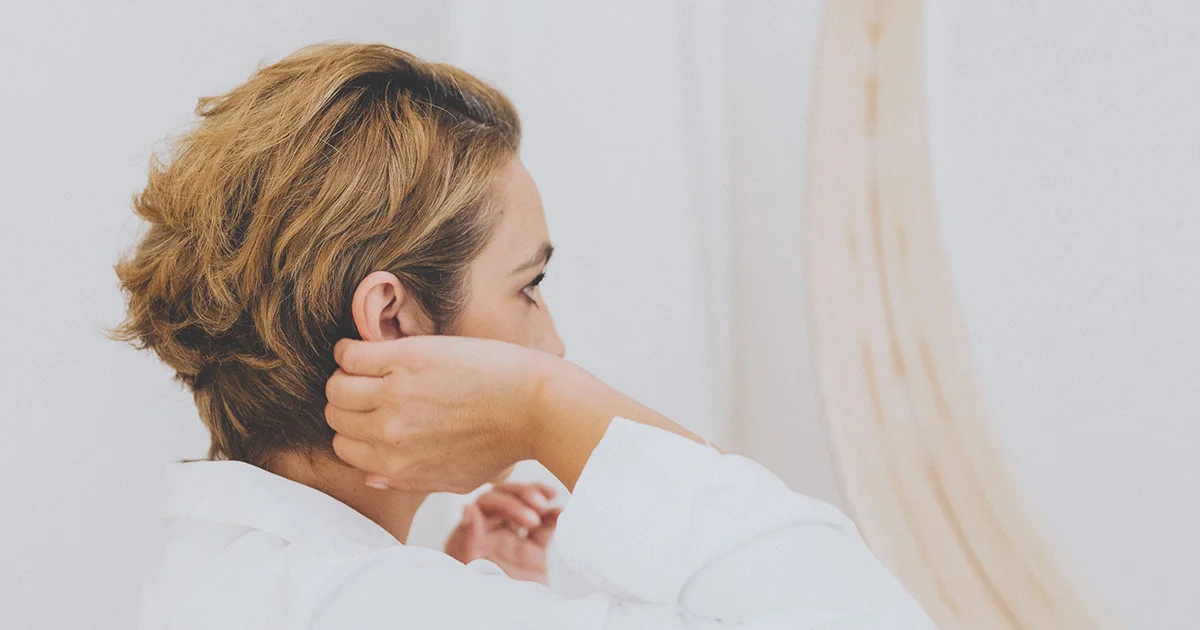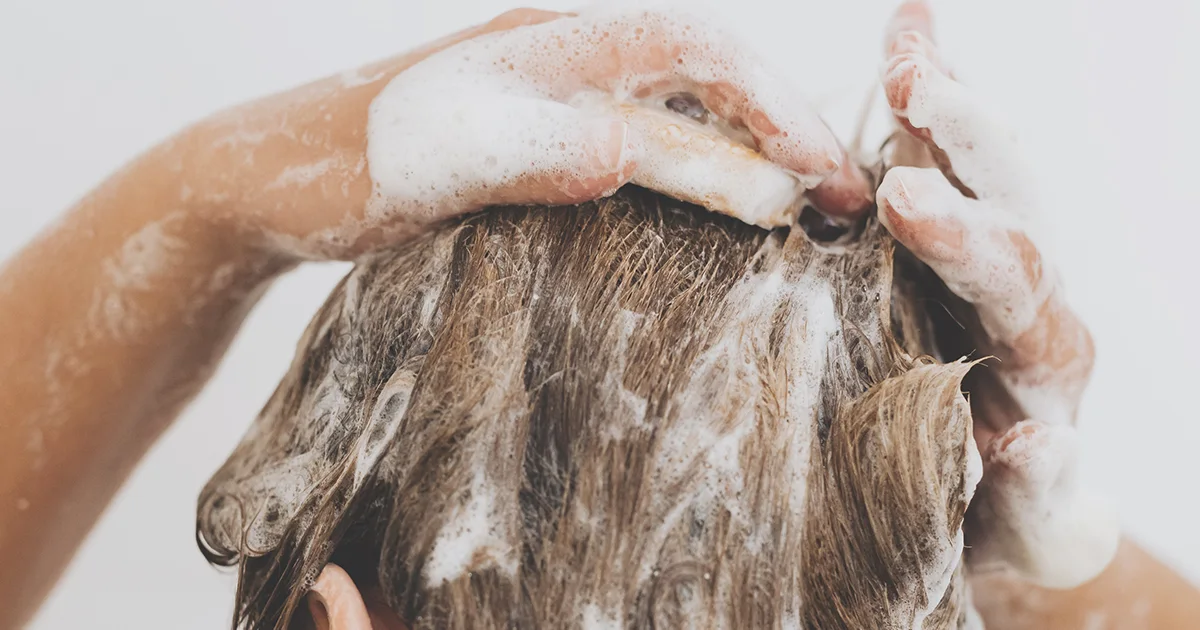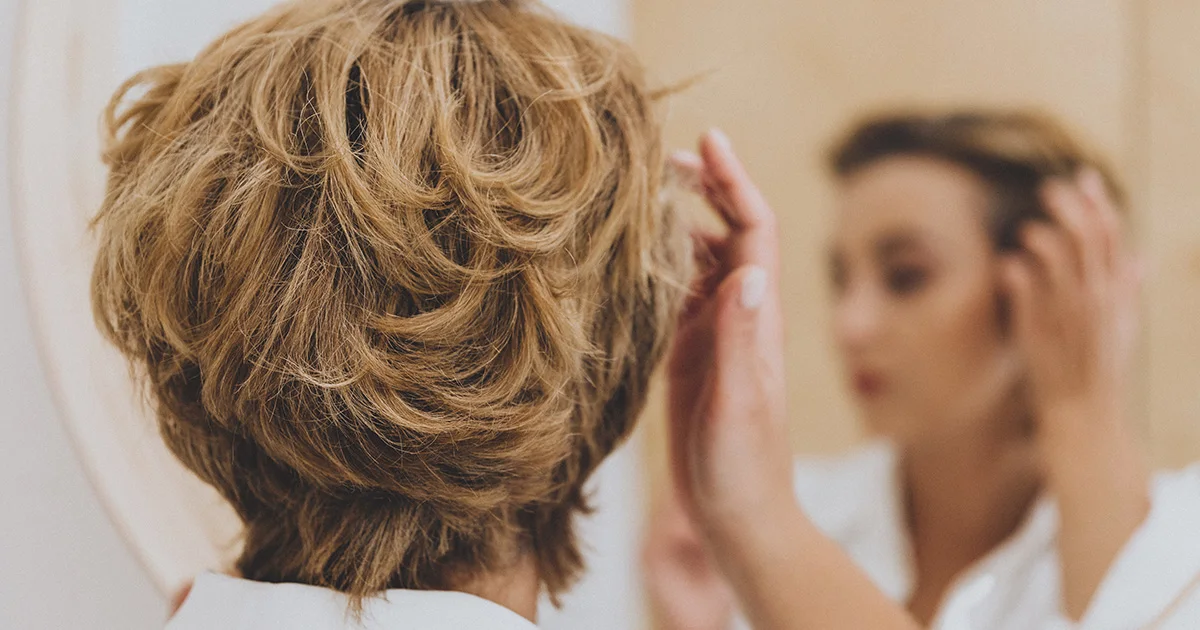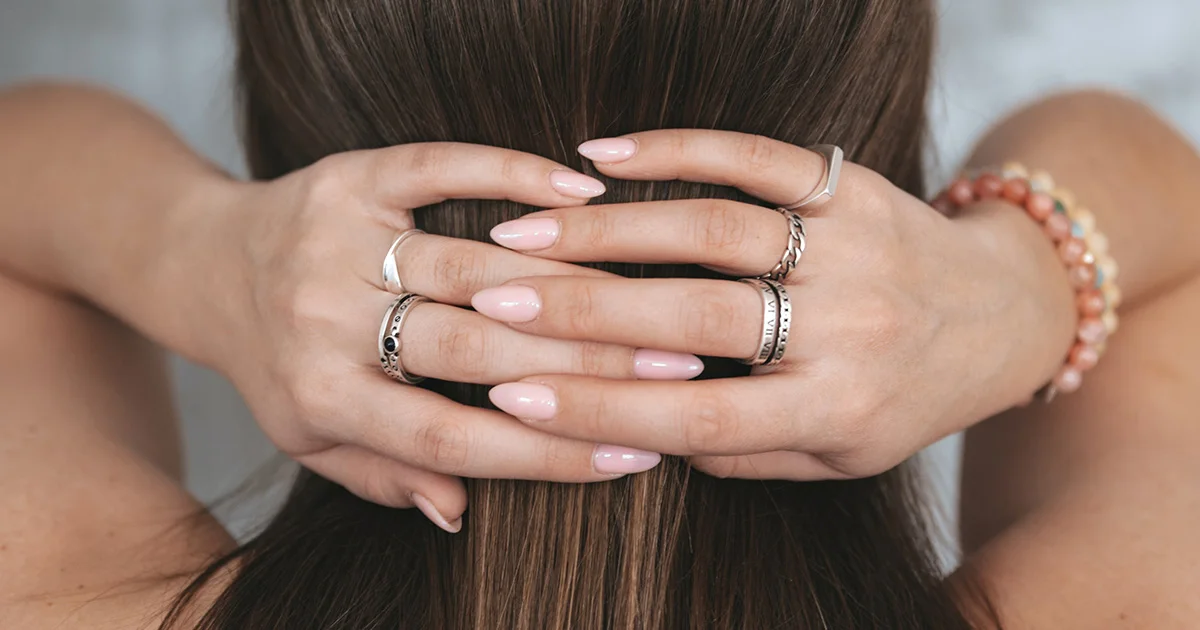Here's what we'll cover
Here's what we'll cover
Many people experience hair loss or have thin or thinning hair. This can be due to factors like genetics, age, hormonal changes, medications, and medical conditions.
While you can’t permanently change the texture of your hair follicles or reverse some changes in hair texture and thickness, there are some things you can do to help support a thicker mane.
How to get thick, healthy hair
When it comes to thickening your hair, you have a few options. Some—like getting more sleep—are easy to implement into your daily life, while others—like hair transplants—may require a little more planning.
Here are 10 things you can do that may help thicken your hair.
1. Boost your overall health
Hormonal imbalances, high stress levels, and smoking could increase your risk for thinning hair (Ramos, 2015).
So, making changes in your lifestyle may help support thicker hair and lower your risk for hair loss. Here are some lifestyle tips to support your overall health (including your hair health):
Quit smoking
Manage stress levels through activities like meditation, mindfulness, exercise, getting enough sleep, and making time for hobbies.
Move throughout the day to increase your activity level by walking more and taking the stairs when possible.
Aside from lifestyle factors contributing to hair thinning, medical conditions and life events can also impact your hair by altering your hormone levels.
For example, some women experience hair thinning after having a baby because of the hormonal changes that occur during pregnancy, like fluctuations in the hormone estrogen (Gizlenti, 2014).
This is why it’s a good idea to reach out to your healthcare provider if you experience sudden hair thinning or hair loss so they can make sure that your hormone levels are within their normal ranges.
2. Look for sulfate-free shampoo and conditioner
Avoid shampoos and conditioners that contain sulfate. Companies add sulfates to hair care products because they are effective at removing dirt and debris that build up on the scalp and in hair.
The problem with sulfates is that they are a little too effective at cleaning hair. They can strip your hair’s natural oils while irritating and damaging hair follicles. This irritation and damage can result in thinner and easily-damaged hair (Monselise, 2015).
But don’t let that stop you from buying volumizing hair-care products (just make sure they’re sulfate-free). These types of products can help your hair appear thicker by adding a more airy look to your hair. They contain ingredients to help hydrate and protect your hair without weighing it down, leading to a fuller, more voluminous appearance.
3. Minimize heat damage
Heat styling with blow dryers, curling irons, and straighteners can impact the health of your hair.
A 2020 study found heat styling leads to an increased risk of hair thinning, color changes, and damage to individual hair shafts. However, while individual hairs appeared thinner in people who used heat styles, the amount of hair loss was similar to the control group (Malkani, 2020).
This means heat damage could make your hair appear thinner in texture but may not actually increase hair loss.
If you want to continue heat styling your hair, try using heat-protecting styling products. These products may help reduce damage, breakage, and frizzy hair (Zhou, 2011).
4. Proper hair brushing techniques
Using the wrong brush and brushing techniques could also increase hair damage.
Experts recommend using a wide-toothed comb or brush with rounded tips to protect your hair from damage. Then, start brushing your hair at the ends and work your way up to the roots. This helps detangle your hair slowly, puts less pressure on your hair roots, and may help prevent breakage.
It’s also best to brush your hair when it’s dry. Brushing your hair when it’s wet is more damaging because it applies more force to the scalp and hair root (Monselise, 2015).
You should also take how often you brush your hair into consideration. Research suggests that brushing your hair too frequently is associated with increased hair loss and that decreasing hair brushing frequency may lower hair shedding (Kiderman, 2009).
5. Change how often you wash your hair
Shampooing your hair daily removes its protective layer of natural oils. This can lead to dry, frizzy hair that’s more likely to become staticky (Monselise, 2015).
So, how often should you wash your hair? For some people, washing their hair every 2–3 days may be best. But it ultimately depends on factors like hair texture, oil production, and hair type. For example (AAD-a, n.d.; AAD-b, n.d.):
African American people should wash their hair once a week or every other week to prevent product build-up and dry hair.
People with very oily hair may need to wash as often as once per day if their scalp is oily.
Colored or chemically-treated hair usually tends to be drier and requires less frequent washing.
As you get older, less frequent washing is encouraged because the scalp produces less oil as you age.
6. Eat a healthy diet
Eating a well-balanced diet and taking certain supplements can support the health of your hair.
Research suggests that nutrients like biotin, omega-3 fatty acids, vitamin C, and vitamin D might help make your hair healthier. However, there is limited research on the benefit of nutrient supplementation (Guo, 2017).
Additional supplements aren’t likely to improve hair thickness if you’re getting enough nutrition from your diet. Most research suggests supplements only improve hair quality if you have a nutrient deficiency (Guo, 2017).
So, the best approach may be to aim for eating a balance of fruits, vegetables, lean proteins, and healthy fats to help prevent a deficiency. Then, add supplements if needed.
7. Topical home remedies
There’s a lot of advice out there about applying different foods to your hair to boost hair growth and thickness. Here are some of the popular topical home treatments for hair loss and what research says:
Eggs: A 2018 study looked at the effects of a peptide in egg yolks on hair regrowth. The study found egg yolk peptides may help stimulate hair growth (Nakuamura, 2018).
Olive oil: There is limited research on the effects of olive oil and hair growth. A 2017 case study of someone with psoriatic alopecia found that a treatment program that included olive oil, tar shampoo, and a medicated scalp lotion helped stabilize hair loss (Iamsumang, 2017)
Avocado rubs: Some believe that avocados can benefit the skin and hair. However, there is very little research on avocados and hair loss. There currently is no scientific evidence to support avocado rubs might improve hair thickness.
8. Topical medicinal treatments
Over-the-counter topical treatments like minoxidil are popular. These products are suggested to work by dilating or widening the blood vessels in the scalp to increase blood flow. In theory, the increased blood flow may help stimulate hair growth.
Some people have reported improvements in hair growth and thickness while using these products (Umar, 2021). However, if you stop using topical products, hair can often revert to how it was originally.
Oral Minoxidil Important Safety Information: Read more about serious warnings and safety info.
9. Scalp treatments
A healthy scalp is important for healthy hair growth. When your scalp experiences things like dandruff, irritation, psoriasis, or dermatitis, it can lead to damage that may thin your hair.
Research suggests that using hair care products to treat these conditions and improve the health of your scalp promotes healthy hair (Trüeb, 2018).
Even if you don’t have a condition that affects your scalp, you can still treat it with some TLC in the form of a scalp massage. A 2016 study found that 24 weeks of daily scalp massages stimulated certain cells in the scalp leading to thicker hair in the study’s participants (Koyama, 2016).
10. Hair transplants and mesotherapy
If lifestyle changes, treatments, or medications don’t work, you also have the option of hair transplants or mesotherapy.
A hair transplant is a procedure that moves hair follicles from one part of the body to a balding or bald area.
A 2019 study assessed the satisfaction of people who underwent a hair transplant and found that people were highly satisfied with their appearance, and on average, thought they appeared about five years younger (Liu, 2019).
Mesotherapy is a medical technique that injects vitamins, hormones, enzymes, and plant extracts to promote healthy skin and hair. A 2019 study showed mesotherapy treatments may increase the diameter of hair shafts (Gajjar, 2019).
When to see a healthcare provider for thinning hair
If you experience sudden hair loss or thinning, talk with your healthcare provider because it could be a sign of an underlying condition.
Possible causes of hair loss include:
Thyroid disorders
Anemia
Psoriasis
Dermatitis
Your healthcare provider can help you determine if a medical condition is causing your hair loss or if it’s simply a normal part of aging. Then, they can review options with you to help prevent further hair loss and, if possible, stimulate hair growth.
DISCLAIMER
If you have any medical questions or concerns, please talk to your healthcare provider. The articles on Health Guide are underpinned by peer-reviewed research and information drawn from medical societies and governmental agencies. However, they are not a substitute for professional medical advice, diagnosis, or treatment.
American Academy of Dermatology Association (AAD-a). (n.d.). Black hair: tips for everyday care. Retrieved from https://www.aad.org/public/everyday-care/hair-scalp-care/hair/care-african-american
American Academy of Dermatology Association (AAD-b). (n.d.). Tips for healthy hair. Retrieved from https://www.aad.org/public/everyday-care/hair-scalp-care/hair/healthy-hair-tips
Gajjar, P. C., Mehta, H. H., Barvaliya, M., et al. (2019). Comparative study between mesotherapy and topical 5% minoxidil by dermoscopic evaluation for androgenic alopecia in male: a randomized controlled trial. International Journal of Trichology , 11 (2), 58–67. doi:10.4103/ijt.ijt_89_18. Retrieved from https://www.ncbi.nlm.nih.gov/pmc/articles/PMC6463458/
Gizlenti, S. & Ekmekci, T. R. (2014). The changes in the hair cycle during gestation and the post-partum period. Journal of the European Academy of Dermatology and Venereology , 28 (7), 878–881. doi:10.1111/jdv.12188. Retrieved from https://pubmed.ncbi.nlm.nih.gov/23682615/
Guo, E. L. & Katta, R. (2017). Diet and hair loss: effects of nutrient deficiency and supplement use. Dermatology Practical & Conceptual , 7 (1), 1–10. doi:10.5826/dpc.0701a01. Retrieved from https://www.ncbi.nlm.nih.gov/pmc/articles/PMC5315033/
Iamsumang, W., Sriphojanart, T., & Suchonwanit, P. (2017). Psoriatic alopecia in a patient with systemic lupus erythematosus. Case Reports in Dermatology , 9 (1), 51–59. doi:10.1159/000462958. Retrieved from https://www.ncbi.nlm.nih.gov/pmc/articles/PMC5465727/
Kiderman, A., Gur, I., & Ever-Hadani, P. (2009). The effect of brushing on hair loss in women. The Journal of Dermatological Treatment , 20 (3), 152–155. doi:10.1080/09546630802512661. Retrieved from https://pubmed.ncbi.nlm.nih.gov/19016066/
Koyama, T., Kobayashi, K., Hama, T., et al. (2016). Standardized scalp massage results in increased hair thickness by inducing stretching forces to dermal papilla cells in the subcutaneous tissue. Eplasty , 16 , e8. Retrieved from https://www.ncbi.nlm.nih.gov/pmc/articles/PMC4740347/
Liu, Y., Liu, F., Qu, Q., et al. (2019). Evaluating the satisfaction of patients undergoing hair transplantation surgery using the FACE-Q scales. Aesthetic Plastic Surgery , 43 (2), 376–382. doi:10.1007/s00266-018-1292-x. Retrieved from https://pubmed.ncbi.nlm.nih.gov/30607569/
Malkani, R. H., Shirolikar, S. M., Karmakar, S., et al. (2020). Hair styling procedures and hair morphology: a clinico-microscopic comparison study. Indian Dermatology Online Journal , 11 (4), 551–558. doi:10.4103/idoj.IDOJ_452_19. Retrieved from https://www.ncbi.nlm.nih.gov/pmc/articles/PMC7413455/
Monselise, A., Cohen, D. E., Wanser, R., et al. (2015). What ages hair?. International Journal of Women's Dermatology , 1 (4), 161–166. doi:10.1016/j.ijwd.2015.07.004. Retrieved from https://www.ncbi.nlm.nih.gov/pmc/articles/PMC5419772/
Nakuamura, T., Yamamura, H., Park, K., et al. (2018). Naturally occurring hair growth peptide: water-soluble chicken egg yolk peptides stimulate hair growth through induction of vascular endothelial growth factor production. Journal of Medicinal Food, 21 (7), 701–708. doi:10.1089/jmf.2017.4101. Retrieved from https://pubmed.ncbi.nlm.nih.gov/29583066/
Ramos, P. M. & Miot, H. A. (2015). Female Pattern Hair Loss: a clinical and pathophysiological review. Anais Brasileiros de Dermatologia , 90 (4), 529–543. doi:10.1590/abd1806-4841.20153370. Retrieved from https://www.ncbi.nlm.nih.gov/pmc/articles/PMC4560543/
Trüeb, R. M., Henry, J. P., Davis, M. G., et al. (2018). Scalp condition impacts hair growth and retention via oxidative stress. International Journal of Trichology , 10 (6), 262–270. doi:10.4103/ijt.ijt_57_18. Retrieved from https://www.ncbi.nlm.nih.gov/pmc/articles/PMC6369642/
Umar, S. & Carter, M. J. (2021). A multimodal hair-loss treatment strategy using a new topical phytoactive formulation: a report of five cases. Case Reports in Dermatological Medicine , 2021 , 6659943. doi:10.1155/2021/6659943. Retrieved from https://www.ncbi.nlm.nih.gov/pmc/articles/PMC7878086/
Zhou, Y., Rigoletto, R., Koelmel, D., et al. (2011). The effect of various cosmetic pretreatments on protecting hair from thermal damage by hot flat ironing. Journal of Cosmetic Science , 62 (2), 265–282. Retrieved from https://pubmed.ncbi.nlm.nih.gov/21635854/


